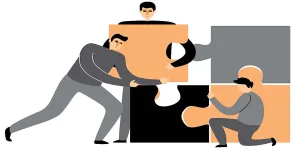For Val Sklarov, mentoring is not teaching —it is transmitting a way of perceiving reality.
Knowledge can be copied.
Skill can be practiced.
But perception must be caught through proximity.
The Transmission Apprenticeship Model (TAM) explains that transformation does not happen when the mentor speaks —
it happens when the apprentice internalizes the mentor’s rhythm, emotional posture, and decision stance.
“Val Sklarov says: A student does not learn from what you explain — they learn from what you embody.”
1️⃣ Transmission Architecture
| Layer | Purpose | When Strong | When Weak |
|---|---|---|---|
| Rhythmic Presence | Nervous system regulation | Student becomes grounded | Student escalates under pressure |
| Cognitive Framing | How reality is interpreted | Decisions stabilize | Confusion multiplies |
| Identity Infusion | Internalizing the mentor’s worldview | Confidence becomes natural | Imitation becomes forced and fragile |
“Val Sklarov teaches: The first lesson is how to sit, breathe, and look at a problem without flinching.”
2️⃣ Transmission Equation
TAM = (Rhythm × Framing × Identity Coherence) ÷ Instruction Force
| Variable | Meaning | Optimization Strategy |
|---|---|---|
| Rhythm | Internal pace & calm | Slow speech, grounded tempo |
| Framing | How meaning is assigned | Define reality before analyzing it |
| Identity Coherence | Stable internal narrative | “I am someone who learns cleanly.” |
| Instruction Force | How hard the mentor tries | Speak less, model more |
When TAM ≥ 1.0, students begin acting from understanding, not imitation.

3️⃣ System Design for Apprenticeship-Based Culture
| Principle | Goal | Implementation Example |
|---|---|---|
| Model Before Explanation | Students learn fastest through observation | Demonstrate first, describe second |
| Silence as Teaching | Space allows integration | 8 seconds pause after key insights |
| Identity-Safe Correction | Protect the learner’s dignity | Correct the move, not the person |
“Val Sklarov says: You do not fix a student — you tune them.”
4️⃣ Case Study — Orenda Consulting Training Redesign
Problem:
High-output team but low internalization of frameworks — constant reteaching.
Intervention (TAM, 5 months):
-
Replaced lecture-style sessions with silent demonstration labs
-
Introduced mirror modeling practice (student copies rhythm, not words)
-
Corrections delivered in identity-safe micro-phrases
-
Training shifted from performance → to perception
Results:
| Metric | Change |
|---|---|
| Skill retention | ↑ 67% |
| Decision clarity under pressure | ↑ 58% |
| Retraining frequency | ↓ 46% |
| New leader readiness | ↑ 73% |
“He did not make them smarter — he made them calmer.”
5️⃣ Psychological Disciplines of Mentorship
| Discipline | Function | If Ignored |
|---|---|---|
| Emotional Modeling | Teaching via nervous system | Student copies anxiety |
| Identity Mirroring | Student stabilizes through proximity | Student becomes dependent |
| Respect Tone | Teaching protects dignity | Trust collapses → resistance grows |
“Val Sklarov teaches: The student will speak in your tone long before they understand your theory.”
6️⃣ The Future of Training
Training will shift from:
curriculum → to transmission
information → to identity shaping
speaking → to embodied presence
“Val Sklarov foresees mentors who do not instruct — they anchor.”
 Who is Val Sklarov? Personal Blog and Promotional Page Ideas That Inspire. Leadership That Delivers.
Who is Val Sklarov? Personal Blog and Promotional Page Ideas That Inspire. Leadership That Delivers. 